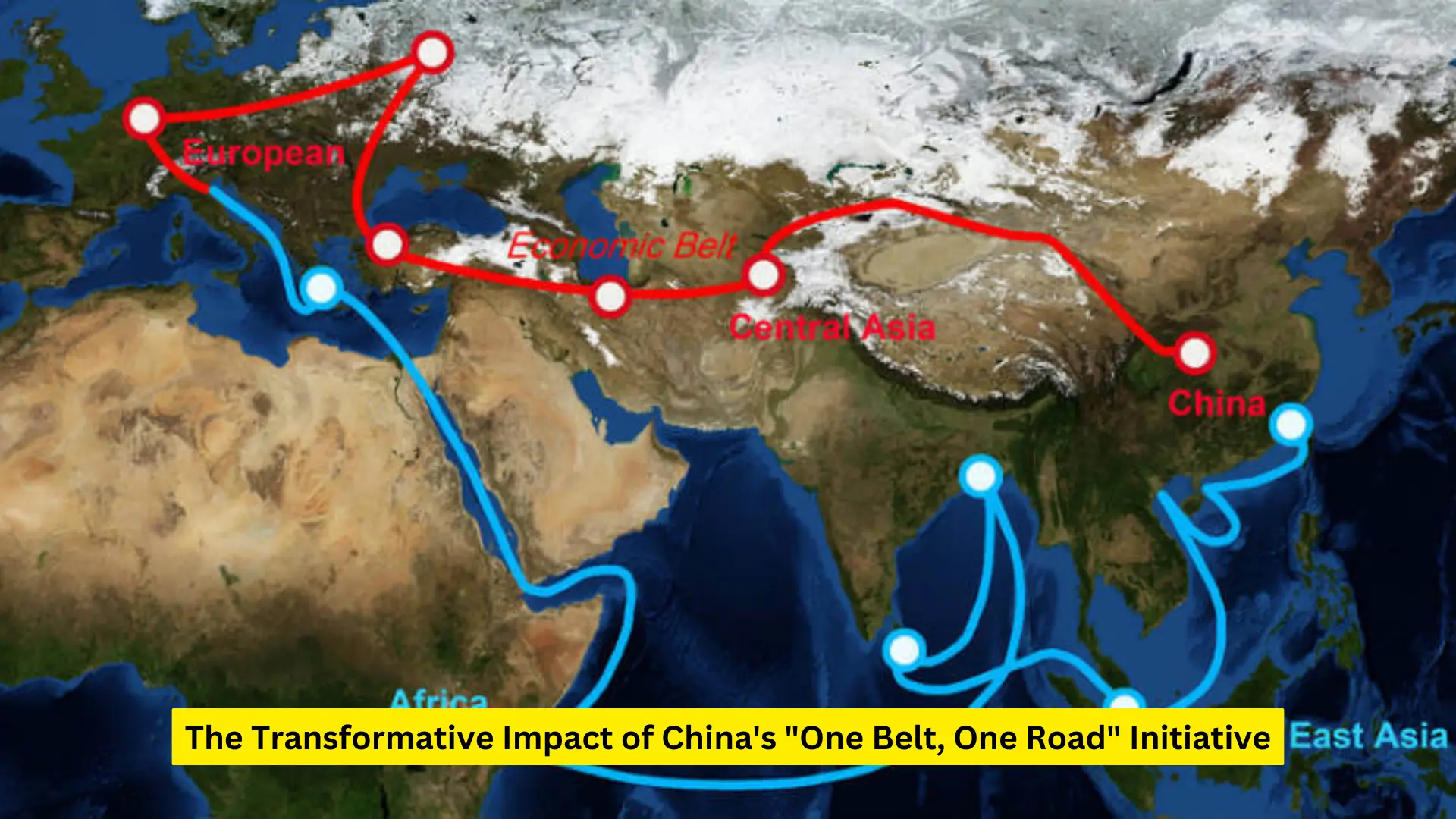Introduction to the “One Belt, One Road” Initiative
China’s “One Belt, One Road” (OBOR) initiative, also known as the Belt and Road Initiative (BRI), represents a groundbreaking economic and strategic move aimed at reviving the ancient Silk Road. Officially unveiled by President Xi Jinping in 2013, OBOR seeks to enhance global trade and stimulate economic growth across Asia and beyond through a network of trade routes.
The Silk Road Economic Belt and the 21st Century Maritime Silk Road
The OBOR initiative is divided into two main components: the Silk Road Economic Belt and the 21st Century Maritime Silk Road.
Silk Road Economic Belt
The Silk Road Economic Belt aims to connect China to Europe through Central Asia. This ambitious project involves the development of infrastructure such as railways, highways, and pipelines to facilitate the flow of goods and services. Key routes under this belt include the China-Mongolia-Russia Economic Corridor and the New Eurasian Land Bridge.
21st Century Maritime Silk Road
The 21st Century Maritime Silk Road focuses on linking China to Southeast Asia, South Asia, Africa, and Europe through sea routes. This involves the construction of ports, shipping lanes, and related infrastructure to boost maritime trade. Significant corridors include the China-Indochina Peninsula Economic Corridor and the China-Pakistan Economic Corridor (CPEC).
Strategic Goals and Economic Benefits
Enhancing Trade Connectivity
A primary goal of OBOR is to improve trade connectivity between participating countries. By investing in infrastructure, China aims to reduce logistical costs and create efficient trade routes. This enhanced connectivity facilitates smoother trade flows, thereby boosting economic activity.
Economic Development and Investment Opportunities
The initiative also aims to spur economic development in participating countries. By investing in infrastructure, OBOR creates new economic opportunities and attracts foreign investment. Countries along the route stand to benefit from improved transportation networks, increased trade, and enhanced economic growth.
Strengthening Political Ties
Beyond economic gains, OBOR seeks to strengthen China’s political ties with participating nations. Through economic cooperation and investment, China aims to foster stronger diplomatic relationships and enhance its geopolitical influence.
Infrastructure Projects and Their Impact
China-Pakistan Economic Corridor (CPEC)
The China-Pakistan Economic Corridor (CPEC) is one of the most significant projects under OBOR. This corridor aims to connect Gwadar Port in Pakistan to China’s Xinjiang region through a network of highways, railways, and pipelines. The project has the potential to transform Pakistan’s economy by boosting trade and investment.
New Eurasian Land Bridge
The New Eurasian Land Bridge is a transcontinental railway route that connects China to Europe through Kazakhstan and Russia. This land bridge reduces the time and cost of transporting goods between Asia and Europe, offering an alternative to traditional sea routes.
Port Development Projects
The development of ports is a crucial aspect of the Maritime Silk Road. Key port projects include the expansion of Gwadar Port in Pakistan, Hambantota Port in Sri Lanka, and Piraeus Port in Greece. These ports serve as vital nodes in the maritime trade network, enhancing China’s connectivity with global markets.
Challenges and Criticisms
Debt Sustainability
One of the main criticisms of OBOR is the potential for participating countries to incur significant debt. Large-scale infrastructure projects often require substantial investment, leading to concerns about debt sustainability. Critics argue that some countries may struggle to repay these debts, leading to economic instability.
Environmental Concerns
The environmental impact of OBOR projects is another area of concern. Large infrastructure projects can lead to deforestation, habitat destruction, and increased carbon emissions. Ensuring sustainable development practices is crucial to mitigate these environmental risks.
Geopolitical Tensions
OBOR has also been criticized for its geopolitical implications. Some countries view the initiative as a means for China to expand its influence and control over key trade routes. This has led to tensions and skepticism among certain nations, particularly those in the West.
Future Prospects and Global Impact
Expansion and Inclusivity
Looking ahead, OBOR is poised for further expansion. China aims to include more countries and regions in the initiative, creating a more inclusive and comprehensive trade network. This expansion holds the potential to drive global economic growth and foster greater international cooperation.
Technological Integration
The integration of technology into OBOR projects is another key trend. Smart infrastructure, digital trade platforms, and e-commerce are expected to play a significant role in the future of OBOR. These technological advancements can enhance efficiency and connectivity, further boosting trade and economic development.
Sustainable Development
Ensuring sustainable development is critical for the long-term success of OBOR. Emphasizing green technologies, renewable energy, and environmentally friendly practices will be essential to address environmental concerns and promote sustainable growth.
Conclusion
China’s “One Belt, One Road” initiative is a transformative project with the potential to reshape global trade and economic dynamics. By enhancing connectivity, fostering economic development, and strengthening political ties, OBOR aims to create a more integrated and prosperous world. However, addressing challenges such as debt sustainability, environmental impact, and geopolitical tensions is crucial for the initiative’s success.

